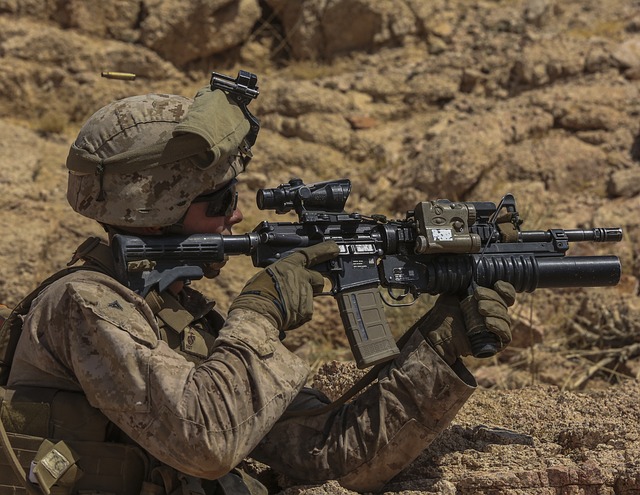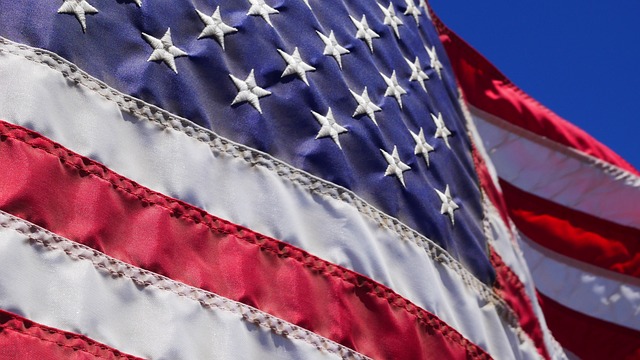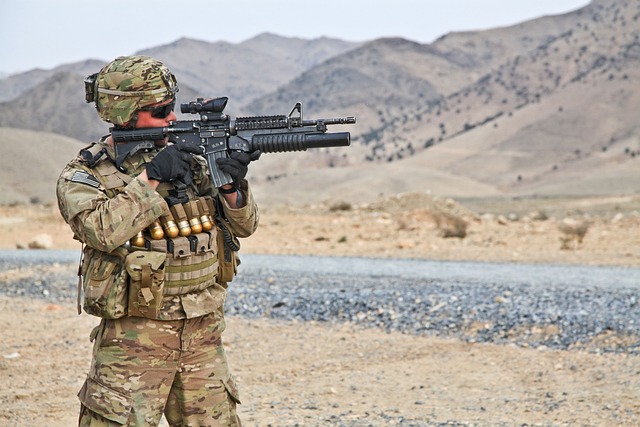The US Army Reserve Flag is a multifaceted symbol deeply rooted in the heritage and values of the U.S. Army Reserve Component. Its design reflects a historical continuity that has adapted over time to mirror the evolving nature of military conflict and the role of reserve forces, embodying the collective identity and ethos of its members. The flag's deep blue background signifies vigilance, steadfastness, and loyalty, with white stars representing the diverse units across the nation that contribute to the Army's readiness. The upwards-pointing white triangle at the hoist symbolizes the commitment to excel in preparedness, while the scarlet and white stripes honor the bravery and pure motives of volunteer soldiers. This flag serves as a daily reminder of honor, dedication, and the enduring American spirit that is synonymous with the U.S. Army Reserve. It fosters unity and pride among reservists, connecting contemporary service members to their ancestral counterparts through traditional heraldic elements. As a symbol of commitment, history, and tradition, the US Army Reserve Flag bridges past and present commitments while affirming future dedications, playing a crucial role in maintaining morale and unit cohesion essential for operational readiness.
The US Army Reserve Flag serves as a visual embodiment of tradition, unity, and valor, each thread woven with historical significance and symbolic representation. This article delves into the rich tapestry of military insignia and heraldry, tracing their origins and evolution to present-day emblems. From the intricate meanings behind colors and emblems to the foundational roots that shape modern military identities, we explore how these symbols not only differentiate units but also foster cohesion and morale among soldiers. Join us as we uncover the stories etched in the US Army Reserve Flag and beyond, a journey through time that illustrates the enduring legacy of army insignia and heraldry.
- Unveiling the Symbolism: The Evolution of Army Insignia and Heraldry
- The Significance of Color and Emblem: A Closer Look at the US Army Reserve Flag
- Historical Roots: How Traditional Heraldry Shapes Modern Military Identities
- Crafting Identity: The Role of Insignia in Unit Cohesion and Morale within the US Army Reserve
Unveiling the Symbolism: The Evolution of Army Insignia and Heraldry

Throughout history, military insignia and heraldry have served as visual narratives encapsulating the values, heritage, and missions of their respective military branches. The evolution of Army insignia and heraldry, such as the US Army Reserve Flag, is a testament to the adaptability and rich tradition of the United States military. Initially, these symbols were simple emblems that distinguished units and leaders on the battlefield. Over time, they became more complex, incorporating various elements that conveyed the identity and function of each unit within the broader Army context.
The US Army Reserve Flag, for instance, reflects a synthesis of historical significance and contemporary representation. Its design evolution has been shaped by the changing nature of warfare and the reserve component’s role within it. The flag’s iconography is carefully selected to represent the diverse and capable force that the Army Reserve constitutes. It symbolizes readiness, honor, and a commitment to defend the nation, drawing upon a deep well of American military history and tradition. This visual language, evident in the intricate details of the flag, is a key element in fostering esprit de corps among reservists and in conveying the unit’s lineage and legacy to the public. The symbolism embedded within each component of the Army Reserve Flag is a manifestation of the collective identity and ethos that binds its members, highlighting the importance of visual symbols in military culture and their role in shaping the narrative of the US Army’s reserve force.
The Significance of Color and Emblem: A Closer Look at the US Army Reserve Flag

The US Army Reserve Flag serves as a visual symbol that encapsulates the identity, history, and mission of the U.S. Army Reserve Component. Within its design, color plays a pivotal role, each hue meticulously chosen to convey specific attributes and values associated with the organization. The deep blue field of the flag represents vigilance, steadfastness, and loyalty—qualities that are essential for the reserve forces who stand ready to defend the nation. The white stars sprinkled across the blue field symbolize the diverse units spread throughout the country, guiding and illuminating the Army’s readiness and response capabilities. The white triangle at the hoist, pointing upward, signifies the resolve and spirit of the U.S. Army Reserve to ascend above and beyond the ordinary call of duty. This emblematic element also alludes to the apex of preparedness, reflecting the organization’s commitment to be at the top of its readiness posture when called upon. The scarlet and white stripes bordering the blue field further underscore the courage and purity of intent with which these volunteer soldiers serve. The flag, through its colors and emblems, tells a story of honor, dedication, and the indomitable American spirit that is the hallmark of the U.S. Army Reserve. It is a tangible representation of the promise to protect and serve the nation, a commitment that transcends the mundane and anchors into the essence of military tradition and service.
Historical Roots: How Traditional Heraldry Shapes Modern Military Identities

The concept of military insignia and heraldry has deep historical roots that stretch back to medieval Europe, where it was first used to identify warriors on the battlefield. Over time, this tradition evolved into a complex system of symbols, colors, and motifs that not only distinguished units but also conveyed a rich tapestry of history, lineage, and honor. The US Army Reserve Flag is a modern manifestation of this enduring legacy. It embodies the storied past of the Army Reserve, linking contemporary service members to their historical predecessors. Each element of the flag’s design—from its colors to its emblematic devices—is steeped in symbolism that harks back to the heraldic practices of yore. The flag serves as a tangible representation of the unit’s heritage, fostering a sense of identity and pride among its members. This connection to tradition is crucial for maintaining esprit de corps within the Army Reserve, as it aligns modern identities with the historical context that shaped their forebears. Today, these heraldic elements continue to play a pivotal role in shaping modern military identities, providing a visual and cultural continuity that honors the past while affirming the present and future commitments of military personnel. The US Army Reserve Flag, like its ancestral heraldic counterparts, is a testament to the enduring nature of these symbols in fostering cohesion, continuity, and tradition within the military. It stands as a symbol of unity, history, and the enduring values that guide those who serve in the Army Reserve.
Crafting Identity: The Role of Insignia in Unit Cohesion and Morale within the US Army Reserve

The US Army Reserve flag serves as a powerful emblem of identity and unity for its units, encapsulating the storied history and collective ethos of its personnel. This flag is not merely a piece of cloth but a tangible representation of the bonds that tie together individuals from diverse backgrounds who come together to serve their country. It plays a pivotal role in fostering unit cohesion by visually symbolizing the shared values and mission of each reserve component. When troops raise the US Army Reserve flag at a training ground or during a deployment, it becomes a rallying point that transcends individual differences, uniting them under a common banner. This act of raising the flag is a daily affirmation of commitment, reinforcing the collective identity and reinforcing the understanding that each member contributes to the unit’s effectiveness and morale.
Moreover, the US Army Reserve flag is instrumental in maintaining high morale within units. It acts as a constant reminder of the pride associated with serving in the reserves, a reminder that extends beyond the immediate operational context. The flag’s presence during ceremonies, parades, and even in administrative spaces serves to keep alive the esprit de corps that is so vital for maintaining unit cohesion. It becomes a focal point for camaraderie, offering both a symbol of honor and a means of forging a deeper connection among service members who may not see each other regularly due to the nature of reserve duty. The flag’s role in these activities thus becomes central to the psychological well-being of the units, contributing significantly to their morale and readiness.
The rich tapestry of symbolism encapsulated in the Army insignia and heraldry, including the US Army Reserve Flag, serves as a visual testament to the storied history and values of military service. From its historical roots to its modern manifestations, these emblems not only foster unit cohesion and morale but also articulate the pride and heritage shared among the ranks. The intricate designs hold deep significance, conveying a narrative of courage, commitment, and honor that has shaped and will continue to influence military identities for generations to come. Through careful examination, one can appreciate the depth of meaning embedded within each symbol, ensuring these traditions remain both relevant and revered in the US Army Reserve’s ongoing legacy.
